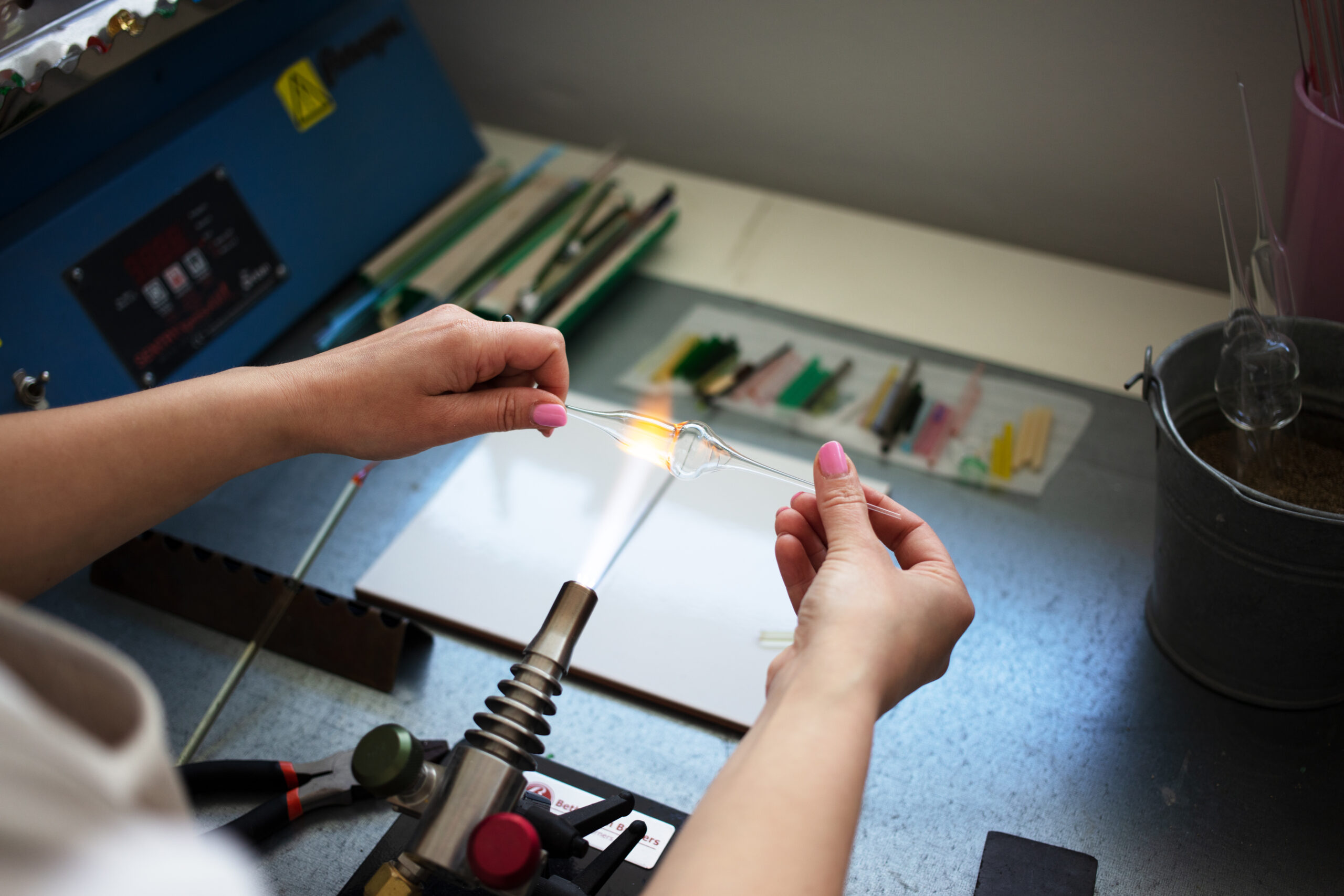
Kati Peltola wants to stay free and weird
Weekly’s Crystal Bennes talks to glass designer Kati Peltola about the unique technique of flameworking, the importance of apprenticeships and the appeal of fragility.
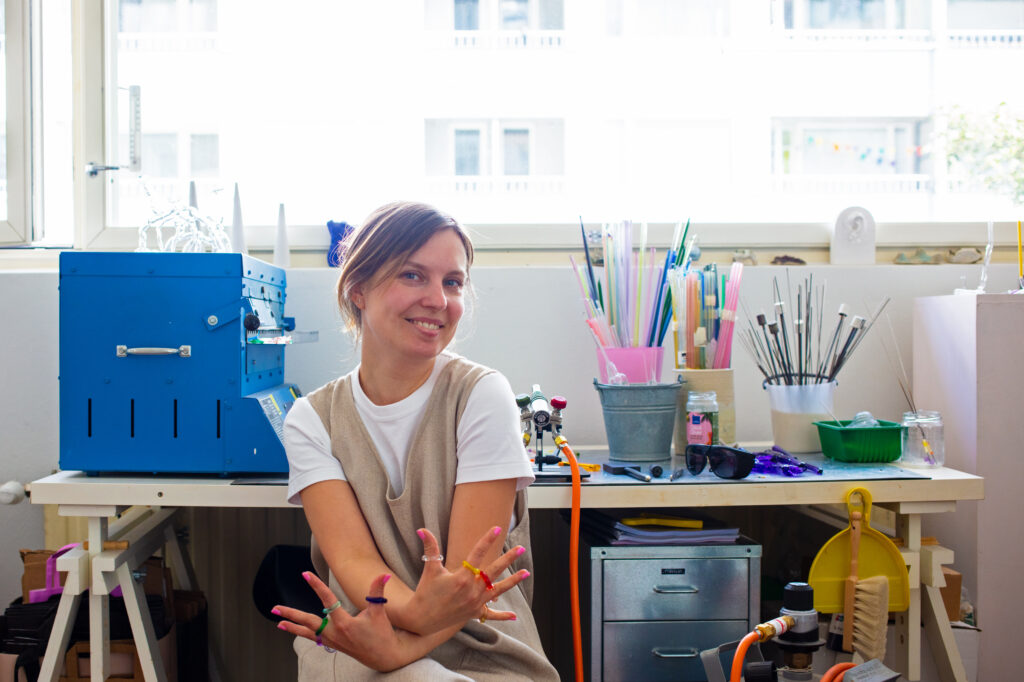
Weekly: Given that there are strong links between Finnish design and blown glass, I am curious as to how you ended up in the world of flameworking.
Kati Peltola: I have always been fascinated by glass. It’s such an easy material to become fascinated by. I remember as a child, spending time looking at blown glass objects and finding them very captivating. As for how I specifically ended up doing flamework, it was a little bit by accident. At Aalto, during my studies, I was able to try glassblowing. I’m rather timid when it comes to learning new techniques, and it’s quite dangerous, so even though I was interested I knew that I wouldn’t become a glass blower.
Around the same time, I was working at Iittala and a colleague of mine there, Mika, used to do glassblowing and we often had conversations about glass. She introduced me to the flameworking technique, which is similar to glassblowing in some ways only on a smaller scale. It’s not very well known in Finland, so I started looking into it more.
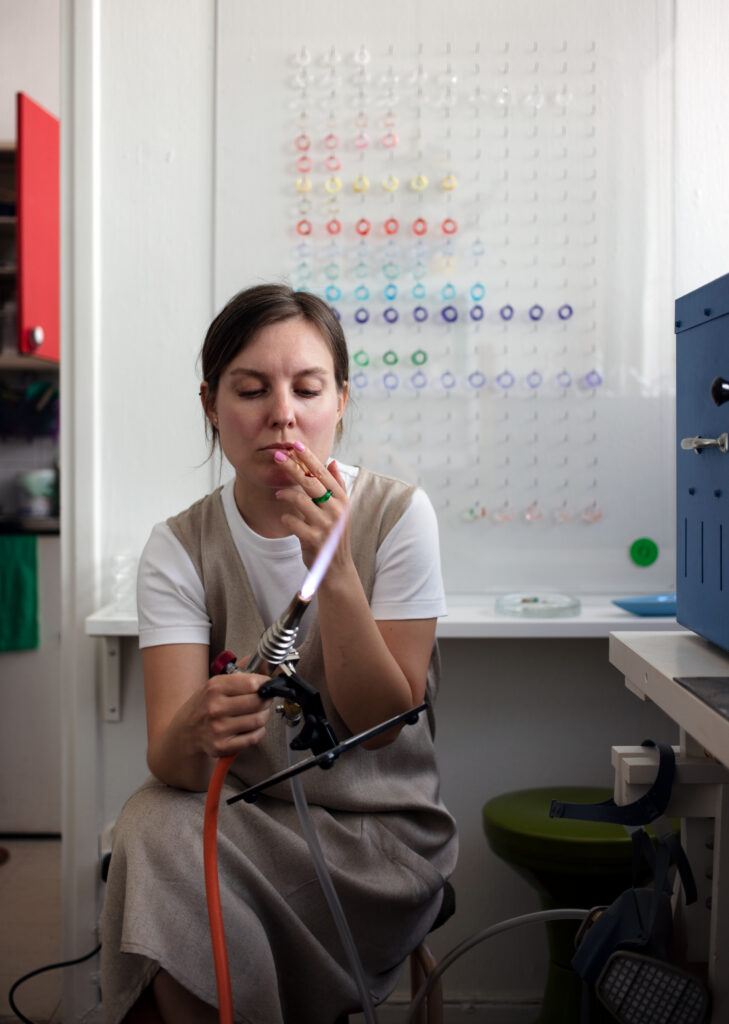
During a conversation with my mom, she told me that she had heard a flameworking glass artist would be appearing at an art fair. We went along to the fair and I met the artist and ended up taking a brief course with her. I really fell in love with the technique and could see a lot of potential for things I could do with it. So I started renting her space to practice as I was still studying at the time. It’s the one thing in my life that I haven’t gone out to buy all the equipment straight away. I only got my own tools about a year ago.
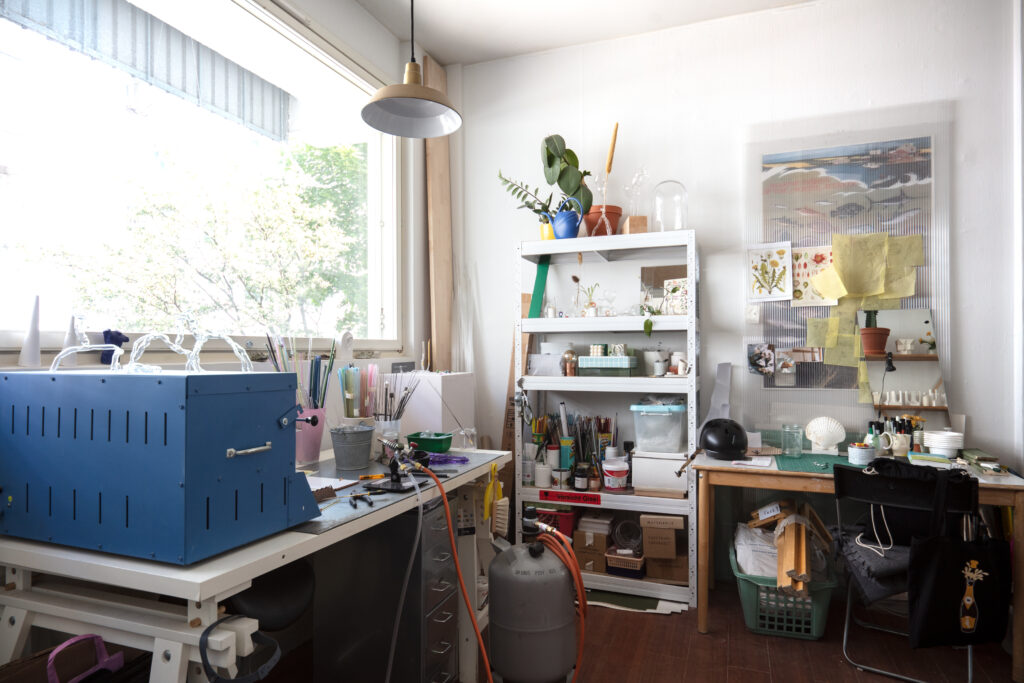
I imagine that it’s quite an investment to get a torch and all of the tools.
There’s that, and also the fact that it’s not something you can do anywhere. I have to have a specific place with proper ventilation. That’s one of the downsides to using a niche technique.
It also makes it a little bit more difficult to create a community and network of support. I’ve managed to create a small network of other glass blowers, the other glass artists in Finland have so far been really supportive of my work. If I have a question, I’ve been able to ask certain people for help. I went to Nuutajärvi to meet Lea Swantz, and Harri Aaltonen, a laboratory glassblower from Turku, has been teaching me a bit.

That must be difficult because learning glass really benefits from being taught by skilled practitioners. You learn so much just by watching people who know what they’re doing. I imagine that’s why you gravitate towards study trips abroad, which is also something I wanted to ask you about.
Yes, I like the idea of apprenticeships and going somewhere and learning new skills. It would also be nice to be able to, maybe this is something more for the future, but to be able to bring these skills back and teach them in Finland, as well.
And who are some of the people you’ve been doing these apprenticeships with?
People like Margot Courgeon from Ulysse Sauvage in Paris. I got to know her through Instagram and asked her if I could come to visit her studio and, if she had the time, to teach me as well. She went to school to train as a lab glass blower, but we share a way of thinking which is that flameworking is a technique which can be used to make many other things. She makes tableware and she is very technically skilled so she knows how to do everything properly. I know that I’m still making ‘errors’ and I don’t think I’m at the stage of making tableware yet.
When I think about doing an apprenticeship, I get this feeling that I would like to learn everything all at once. But it doesn’t work like that. With glass, you have to be patient and practice. I could always go to a school where I could learn the very technical things, but the artist in me just wants to play. Apprenticeships are about learning the basics, but I also want to hold on to freedom in my making. Sometimes, the more you learn, the more you restrict yourself. For now, I want to stay free and weird.
Kati Peltola
You’ve touched on this, but I wanted to ask you more about the fact that the scale of your work is very intimate. You make objects for the body or small, domestic objects. Are you drawn to this scale, or is it connected to the things you previously mentioned about your own sense of timidity and the limitations of your materials at present?
It’s true that I definitely feel most comfortable working with glass on a smaller scale, but in the long term, I plan to expand the size of my work and make larger sculptural pieces. Right now, my tools simply aren’t sufficient for making bigger things, but it’s good to have longer-term goals. Eventually, I would like to exhibit some of my bigger artistic pieces, but it’s too much of a challenge at the moment and I am happy to wait until I have a larger body of work.
As for the pieces work on the body, the jewellery, I love making jewellery, but I consider it more like art. It’s also something I want to further develop.
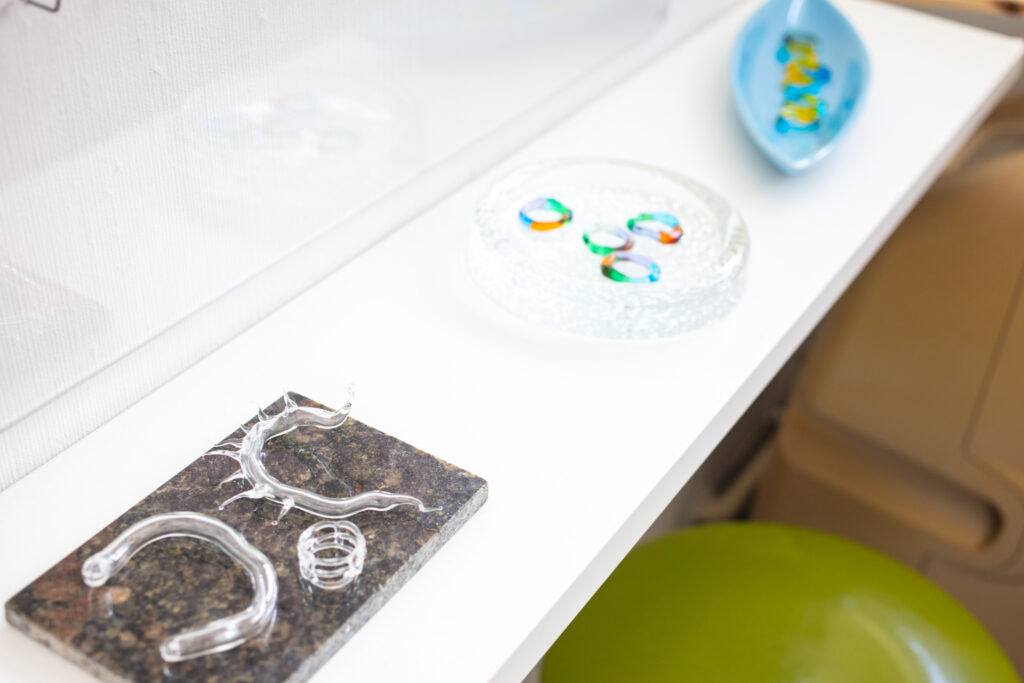
What do you mean you consider the jewellery pieces to be more like art?
I have always been interested in jewellery, but I don’t wear much myself. With glass jewellery, first of all, it’s really beautiful. But it’s also temporary, and ideas to do with time and the temporary are big themes in my work.
A lot of people ask me: but what if they break? Well, of course they can break. It’s jewellery made of glass! But for me there’s something so interesting in this idea of jewellery that is fragile and temporary.
I was speaking to someone recently about how, when I first started making and wearing my glass rings, I used to break them all of the time. More recently, I rarely break them and it makes me think that I must have changed my behaviour. I move my body differently or I take more care when I wear glass jewellery, and that’s fascinating to me. Some time ago, I wrote a text about the rings. I wrote about how they are rings of consciousness to be worn in moments when you want to remember. Like everything in our lives, they are temporary and they might break at any moment.
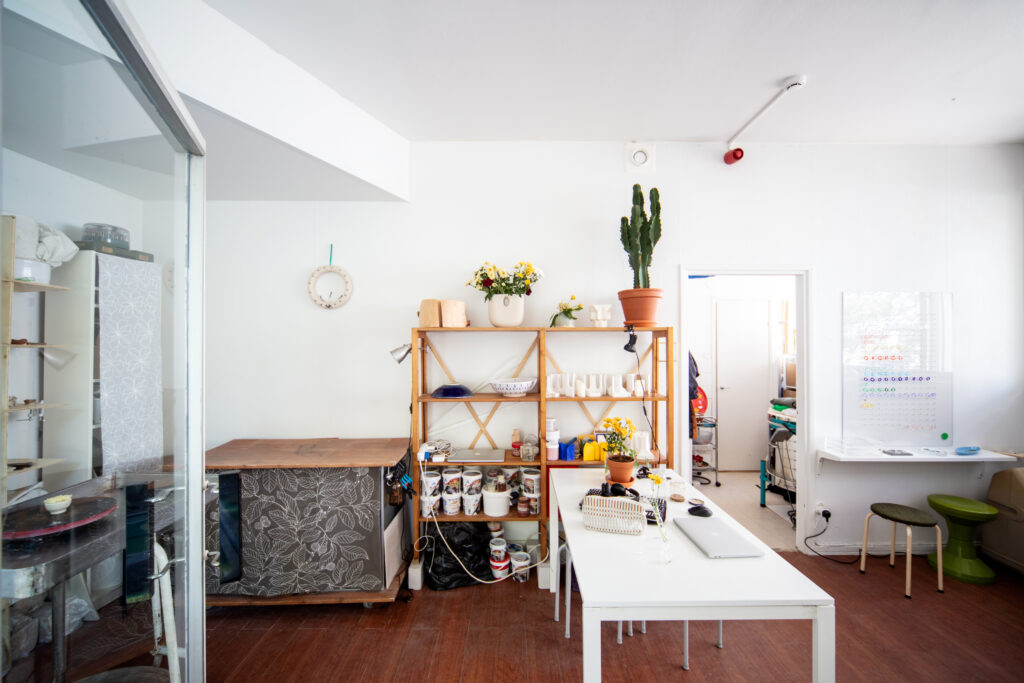
When I was preparing for this conversation, I came across and read your MA thesis on the role of mediators in contemporary craft and design in Helsinki. I found many aspects interesting, not least of which was the rather depressing sense of there being so few opportunities and platforms for young designers in Finland. I wonder why you decided to write about this particular subject and what conclusions you came to for your own practice?
I made a decision that I didn’t want to write about my personal practice. It wasn’t a moment when I wanted to hear feedback about my personal work, as I knew that I would take it too personally. Since I had been considering a career in design mediation, I decided to look into that instead. The main point was that I really wanted to understand how the design world worked and where I would place myself.
Looking back, I think it was also about answering some of the questions I had that Aalto couldn’t answer. I was aware that I would graduate soon and I was thinking about what it would mean to have that degree in my hand. I started my Master’s when Aalto was still at Arabia, my programme was cancelled and then we all moved to Otaniemi, and then Covid hit. I was just unlucky in my study path. There was a lot that I expected from Master’s studies that I never got. Luckily, I had amazing people around me and those conversations with other students were very worthwhile.
School is supposed to be a place where you can dream, but I would have liked to talk about the realities of professional life. I would have liked to talk about what it means to become an entrepreneur and how it all works. I also would have liked to talk more about the work. I think the courses are too short and it doesn’t allow for enough discussion, but I’m sure that’s starting to change a bit…
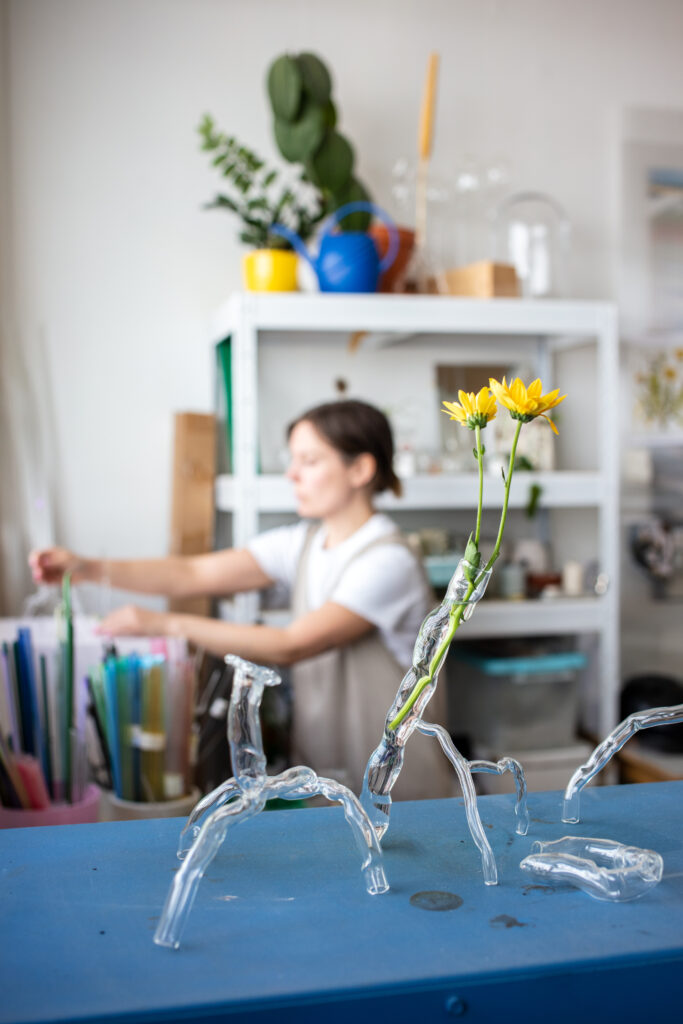
So, the thesis project was about better equipping yourself to be a professional in the design field?
Yes, I think so. It was about trying to figure out my next steps. I realised that mediation wasn’t the right path for me, and that’s when I decided to focus on my own work. At the beginning, I really didn’t want to be a commercial designer and gravitated more towards the artistic side, but I’m increasingly coming back around to design.
When I did my interview for the Finnish Institute residency in New York, I said that I think of myself more of an artist than a designer. In response, one of the panel members said that when they looked at my work, they see that most of my pieces have a potential function. So, I cannot run away from my design background! I’m coming to peace with that again. I can say: I am a designer. Maybe what bothers me is that everybody calls themselves a designer these days and I just want to be special [laughs].
Let’s move on to talk about your studio. I know that you share the space with other designers. How does that work?
Yes, I share with two other designers: Mimi McPartlan, who makes ceramics, and Sara Moayed, who does interior design and furniture. We have a kiln and a window gallery space because we’re on a street front. We’d all like to develop the gallery more, but we’re so busy that it’s hard to find the time. But we want to have changing exhibitions in the window.
It’s quite small, so it can be tricky to share the space between the three of us. And also because I use gas, there can be some restrictions. If I do glass work, I tend to come and do that in the morning and then Sara and Mimi come in the afternoon. We often spend some time here all together, but I tend to be working on my laptop rather than on glass. When I sort out the ventilation, then we can all work here together at the same time.
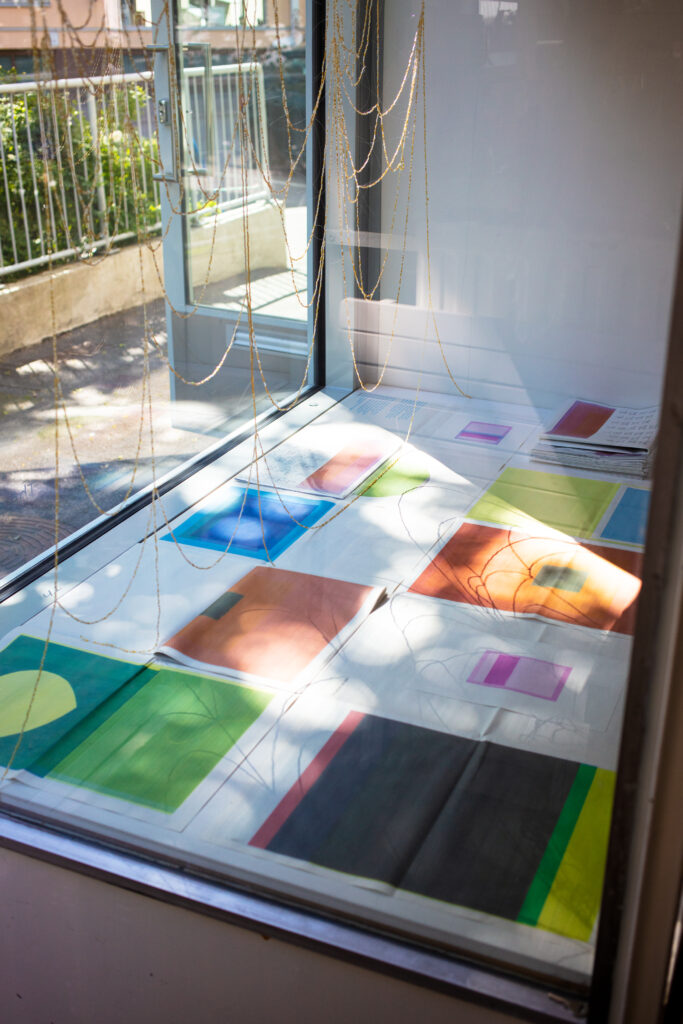
It doesn’t sound like you’re very attached to the space? Does it work ok for what you need?
Oh no, then I think I’m giving the wrong impression. I am attached to it. It’s close to where I live and it’s a really nice space. We have a little terrace out in front and we had our first window exhibition opening recently—a publication exhibition of work by Hikari Nishida—and it has been so lovely to invite people to events here.
It is small, but it’s cosy, and we’re such good friends that we can share the space. It can be difficult at times, but it helps that we all do very different things and can support each other along the way. Even to the point when, if I have a glass event and I don’t want to go alone, Mimi and Sarah would come with me. We do things like write grants together. It’s really nice working like this and I wouldn’t want to have a studio without them.
Finally, you mentioned your residency later in the year at the Finnish Institute in New York, which is very exciting. What have you got planned for that?
It will take place in September and October later this year. I’m hoping to take some courses at Urban Glass in Brooklyn, and they also have tables for rent. Mainly, I’m hoping to practice a lot and take some classes. Of course, I’m planning a visit to the Corning Glass Museum, but we’ll see what else happens. The whole thing is like a dream come true. One I get there, I really just have to make the most of it.
